#abedus water bug
Explore tagged Tumblr posts
Text

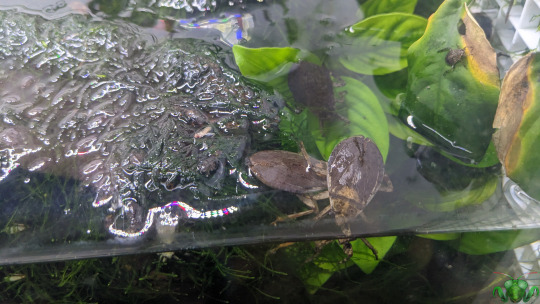

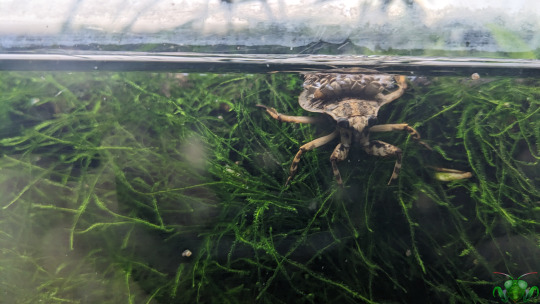

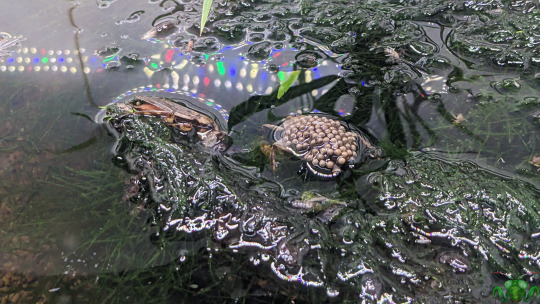
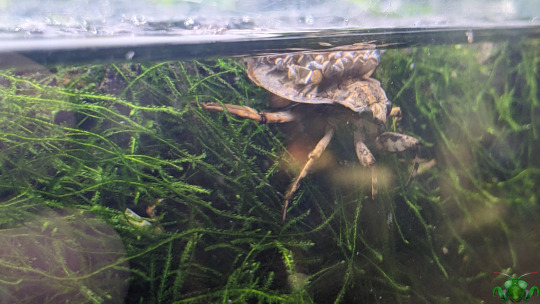


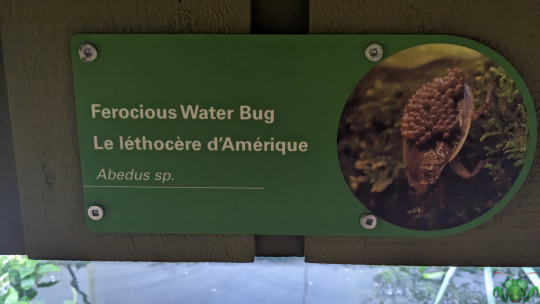
Ferocious Water Bug - Abedus sp.
I was so happy to visit the Toronto Zoo last weekend. It had been a long time since my last visit and it was wonderful to spend the day with some of my dearest friends! In addition to all the delightful outdoor mammalian and avian exhibits, there are plenty of indoor terrarium-based habitats to enjoy full of exotic and/or strange reptiles, amphibians, and insects (obviously) to discover. There are five species in total that I'll be covering over the next few weeks, beginning with a new branch of the Hemipteran order for the blog: Giant Water Bugs (Belostomatidae)! This exhibit mainly showcases the adults, but there are a few nymphs hiding around. As their common name suggests, these large insects make aquatic (freshwater) environments their primary habitat and are well adapted to it despite ultimately being creatures of the land. They all have a flattened, oval-shaped hydrodynamic body, flattened legs that can can tuck in and row, large eyes to visualize a wide view of their aquatic environment, and enlarged raptorial forelegs to seize prey that swims by. Stay clear of those claws, as anything caught in them gets painfully jabbed by the curved rostrum! Such a puncture has earned them the nicknames: "Toe-Biter", "Fish Killer" and "Alligator Flea". Furthermore, like their distant Nepomorpha cousin - the Backswimmer - Giant Water Bugs breathe air, and thusly need to bring it underwater with them since they lack a full set of gills.
To facilitate underwater respiration, these Bugs have adapted a rear abdominal respiratory siphon that they stick out of the water to obtain air while submerged. Yes, a butt-snorkel is the tool for the job! This is why many of the individuals here appear to be tilted as they sit in the water's flora. With larger specimens, it could be mistaken for a stinger, while different species use different types of snorkels to obtain air. From my research, Abedus Water Bugs use two reduced rear-tubes to obtain air and then store it underneath their forewings; they can store quite many a bubble due to their reduced wings beneath, effectively trading their ability to fly for an efficient scuba system. With efficient energy expenditure, they can remain underwater for minutes to hours, and thus have more time for hunting and other activities. Speaking of the latter, you may have noticed a few individuals covered in nodules here. These are male specimens. Females attach their eggs to the backs of males, and the latter will protect them...until they hatch. After they hatch, Abedus nymphs become fair game to hunt, and the nymphs share that behavior, with nymphs further along in development hunting and snatching smaller instars! With the number of eggs here, it looks like the zoo may have a feeding frenzy on its hands! When they aren't eating each other, Giant Water Bugs will eat anything they can grasp (even animals much larger than themselves, similar to Jagged Ambush Bugs) including struggling land insects, snails, tadpoles and fish.
Since the insects belong to the Toronto Zoo, I’ve marked them with the Mantis icon. Pictures were taken August 27, 2023 at the Toronto Zoo with a Google Pixel 4. Please go and visit the animals (insects very much included).
#jonny’s insect catalogue#ontario insect#giant water bug#abedus#abedus water bug#abedus giant water bug#toe biter#aquatic bug#aquatic insect#abedus sp#hemiptera#heteroptera#insect#insect eggs#toronto#toronto zoo#august 2023#2023#nature#entomology#invertebrates#arthropods#arthropod eggs#animals#photography
9 notes
·
View notes
Text
Now that I've finally gotten around to finishing my saved for later projects, I would like to share my insect pinning magnum opus. A shadow box full of nearly every insect I've ever worked on!
(Close ups and image descriptions below the keep reading. Image description also includes all speculative ids that are present on the labels you can see in the photos, so if you're curious as to what something is check there!)
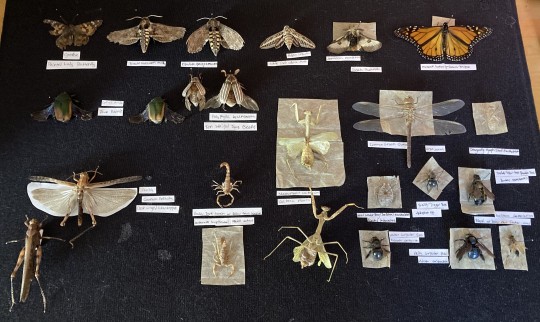
I started this when I was still super new at the hobby, so some specimens are better preserved than others, but it's nice to see my improvement with all of them together. It's also nice to see a sort of representation of all the insect life around me with them.
A lot of these are also in rough shape since I scavenge all of my specimens (usually dead or dying), or am given scavenged specimens, and very few of them were raised or captured for the purpose of pinning. I think this definitely adds to the fun of the hobby though, since each one has a pretty unique story about how it was found or acquired.
Most ID's are also still subject to change and some are still speculative, since I do all my own research for them and am definitely not perfect.
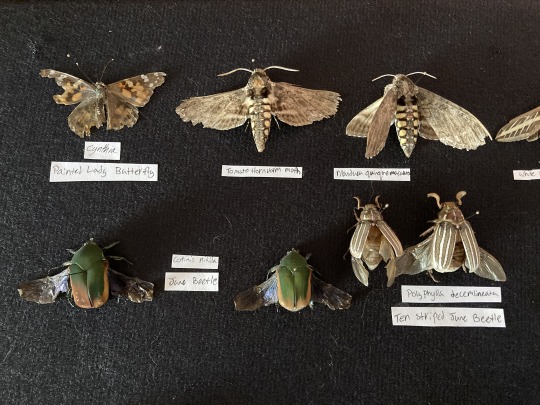
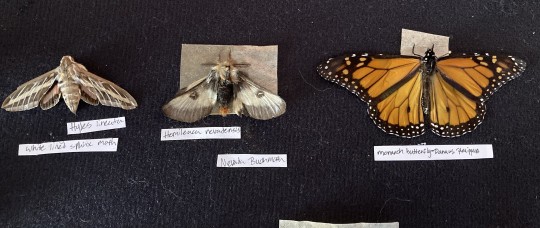


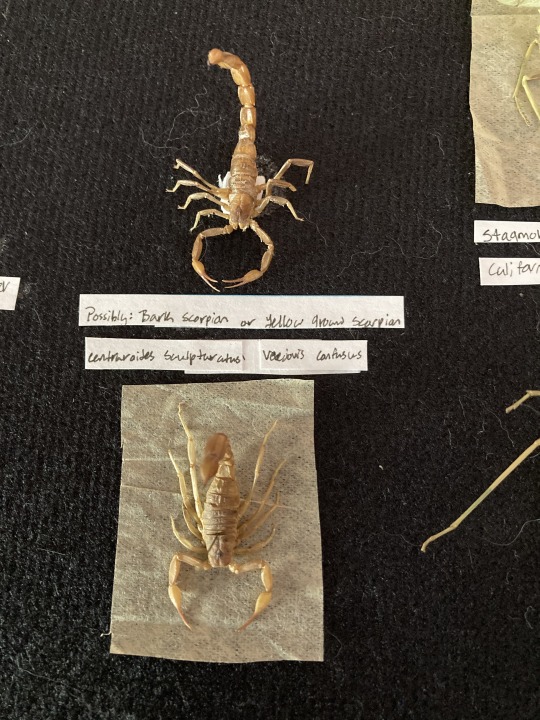

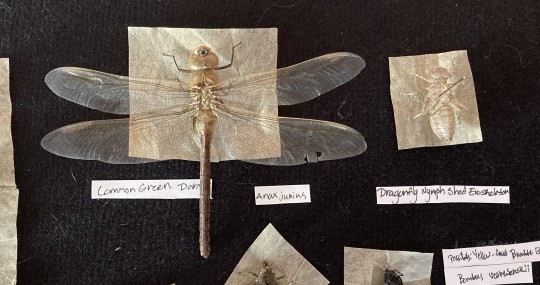
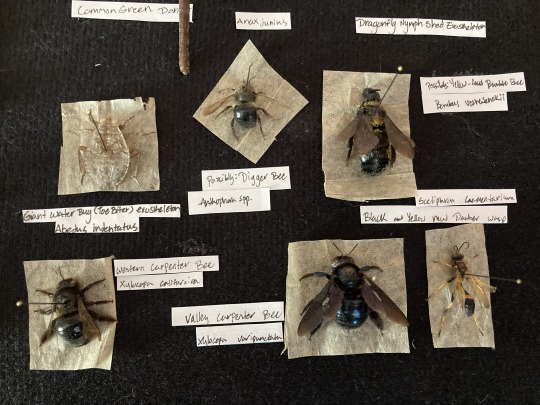
[Image ID: One wide shot image of a black board with various insects displayed on it, with small hand written labels next to, above, or below each specimen. 8 images follow as close ups of each group of specimens. The first displays a painted lady butterfly, scientific name cynthia, next to two tomato hornworm moths, scientific name Manduca quinquemaculata, with two june beetle, scientific name cotinis nitida, and ten striped june beetle, scientific name polyphylla decemlineata, underneath. The second displays a white lined sphinx moth, scientific name hyles lineata, next to a nevada buckmoth, scientific name hemileaca nevadensis, and a monarch butterfly, scientific name danaus plexippus. The third displays two clear winged grasshoppers, scientific name camnula pellucida. The fourth displays two california mantis, scientific name stagmomantis californica, one is displayed on its back, the other on its belly. The fifth and sixth display two views of two scorpions, both either yellow ground scorpions, scientific name Paravaejovis confusus, or arizona bark scorpions, scientific name centraroides sculpturatus. The seventh displays a common green darner dragonfly, scientific name anax junius, and a shed dragonfly nymph exoskeleton. The eighth displays the exoskeleton of a giant water bug, scientific name abedus indentatus, next to a digger bee, scientific name anthophora spp, with a yellow faced bumble bee, scientific name bombus vosnesenskii, next to the digger bee. Below these three specimen are two other bee specimen, a western carpenter bee, scientific name xylocopa californica, and a valley carpenter bee, scientific name xylocopa varipunctata, as well as a yellow legged mud dauber wasp, scientific name sceliphron caementarium. End ID]
#entomology#insect pinning#scorpion#butterfly#mantis#bee#moth#insect tw#drowsy draws#(the drowsy draws tag applies to all my art. even if it's not a drawing per se. so this goes here too!)
22 notes
·
View notes
Photo




Male giant water bugs in the Abedus genus carry their eggs around piggyback style throughout their development. This way, the water bug dads can dodge predators and keep an eye on their babies. They’ll carry these eggs for weeks, shuttling them to the surface for air like an insect minivan. (x)
1 note
·
View note
Photo
manuelbiogeo:
WATER BUG DADS:
Insects are not often given a lot of credit for caring. But one breed of giant water bug (Abedus indentatus) father carries a heavy load. The female lays as many as 150 eggs on the male’s back, which he lugs around for about a week or so until they hatch. In the interim he seems to tend the eggs by cleaning them off, making sure they get enough air and, of course, scuttling away from potential predators.

35 notes
·
View notes
Text

Most insects generate very large numbers of young, which must live or die on their own. But there are many exceptions. The harlequin stink bug lays a small batch of eggs and defends them fiercely. A female giant water bug (Abedus indentatus) sticks her fertilized eggs on the back of the male—pictured below—who makes sure they get enough air and water. The female insect’s secretions act as a form of water-proof glue. Quite caring! Photo: Matthew Robinson
277 notes
·
View notes
Text



Ferocious Water Bugs at the Toronto Zoo.
Displayed as Abedus sp.
Males carry the eggs on there wings and I can’t say if this remains true in the wild but it seems like for each make there is a female submerged beside him.
Oh interesting! I’ve never seen them in the wild so I don’t know if a male is always accompanied by a female. It definitely might just be because they’re trapped together in captivity. It’s so cool though that the ladies glue the eggs onto the male’s back and make him carry them around. Put that dude to work. Here’s a good shot of that:

Photo by Greg Hume
Weird dudes! I love them. Thanks for sharing :)
151 notes
·
View notes
Photo




Ferocious Water Bug with Eggs Abedus sp.
Spotted by GregMayberry
2 notes
·
View notes
Photo

Abedus water bug, males carry the eggs for a next generation attached to their backs, presumably for protection. Flight for the male parent is imposible until all eggs have hatch. . . . . . . #visitpanama #panama #bugs #abedus #travel #nature #isthmianadventures (at Santa Fe, Veraguas) https://www.instagram.com/p/B58HRQEhDbI/?igshid=1l4ll8s5y2ati
0 notes